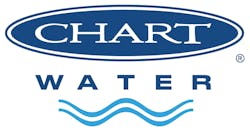
USING HIGH-PURITY OXYGEN TO SUPPLEMENT OR REPLACE AMBIENT AIR, CHEMICALS AND CATALYSTS.
The use of high-purity oxygen as a substitute for ambient air, chemicals, and catalysts has been explored for decades. As early as the 1940s, researchers explored the use of a highpurity oxygen (HPO) activated-sludge process, and by the 1970s, textbooks highlighted its numerous benefits. These include enhanced biological activity, reduced sludge and aeration tank volume, and improved settleability. Such advantages typically lead to higher-quality treatment and increased capacity in existing wastewater treatment plants, and lower infrastructure and construction costs for new facilities.
Today, the HPO delivery system commonly known as supersaturated dissolved oxygen (SDOX®) technology – is widely regarded as a proven, flexible, and efficient tool for delivering supplemental oxygenation to address a number of critical yet common operational issues – often available with little to no capital investment. However, it wasn’t always this way.
In this article, I explore the evolution of supersaturated dissolved oxygen technology and its emergence as a popular solution for a variety of operational challenges and market
pressures. I present two brief case studies of municipal applications from the US and Canada and the associated economic, operational, social, and environmental benefits. In closing, I offer some thoughts on what municipal practitioners may learn from our peers in industry and international market segments that have pursed a fast-followers adoption strategy that leverages the SDOX® data and insights of peers in other market segments to address the perceived risks of adopting a solution that was new to them.
